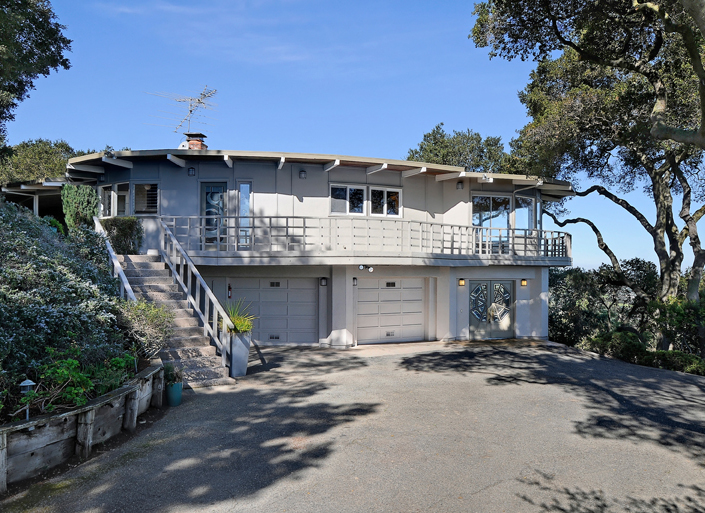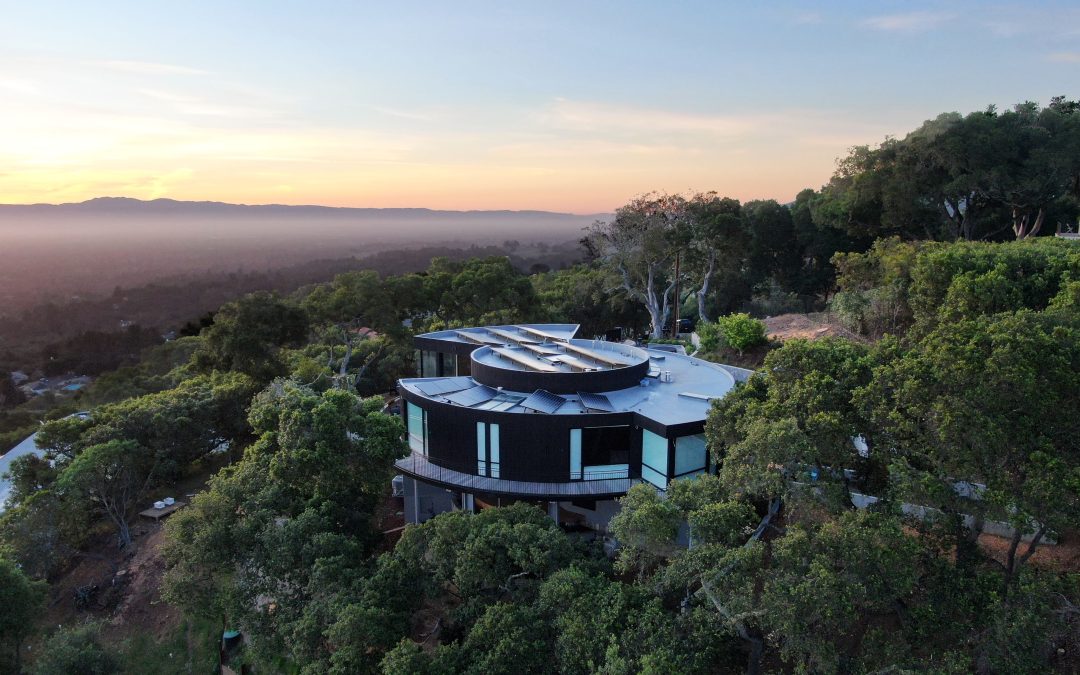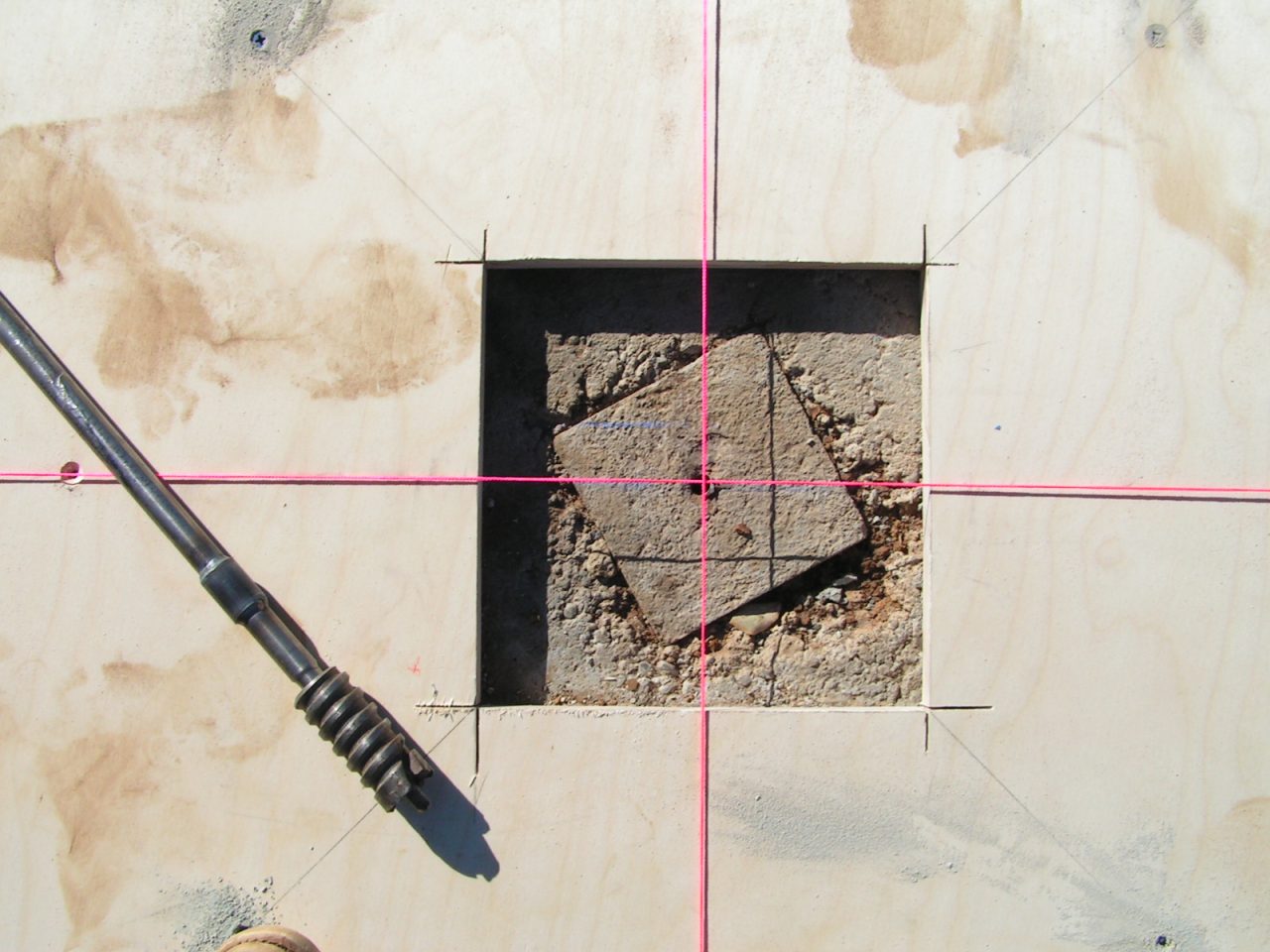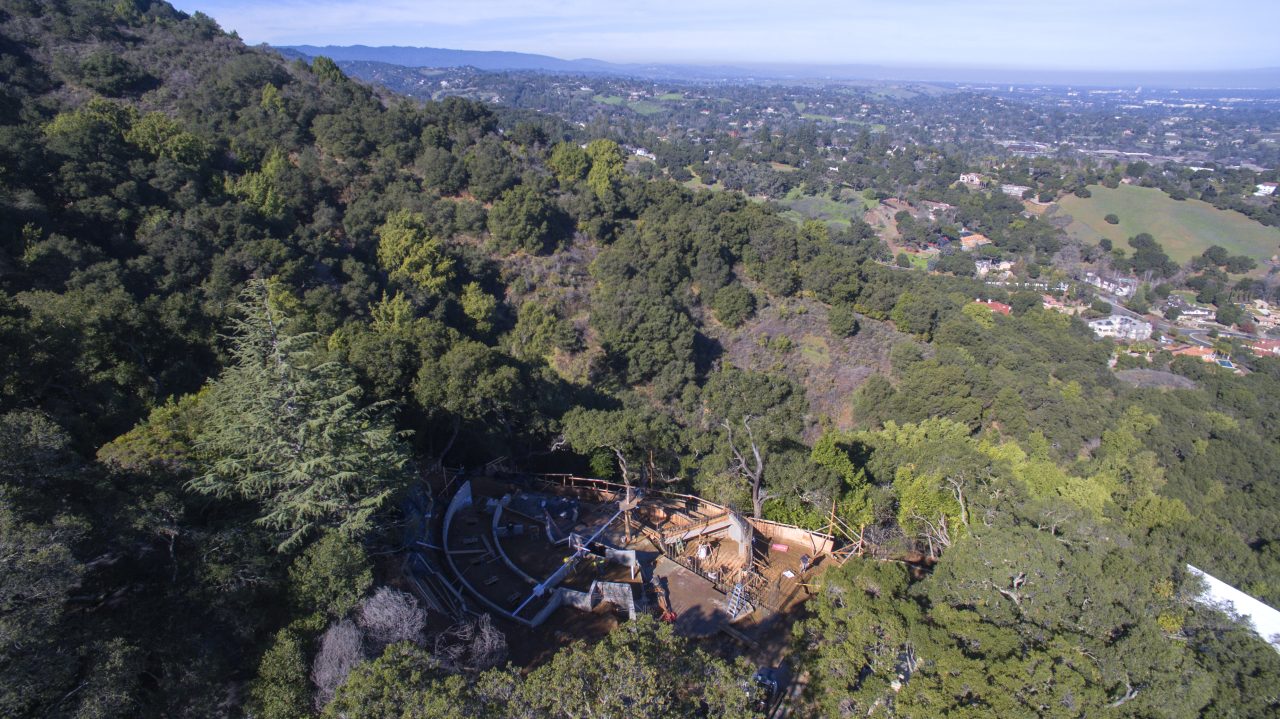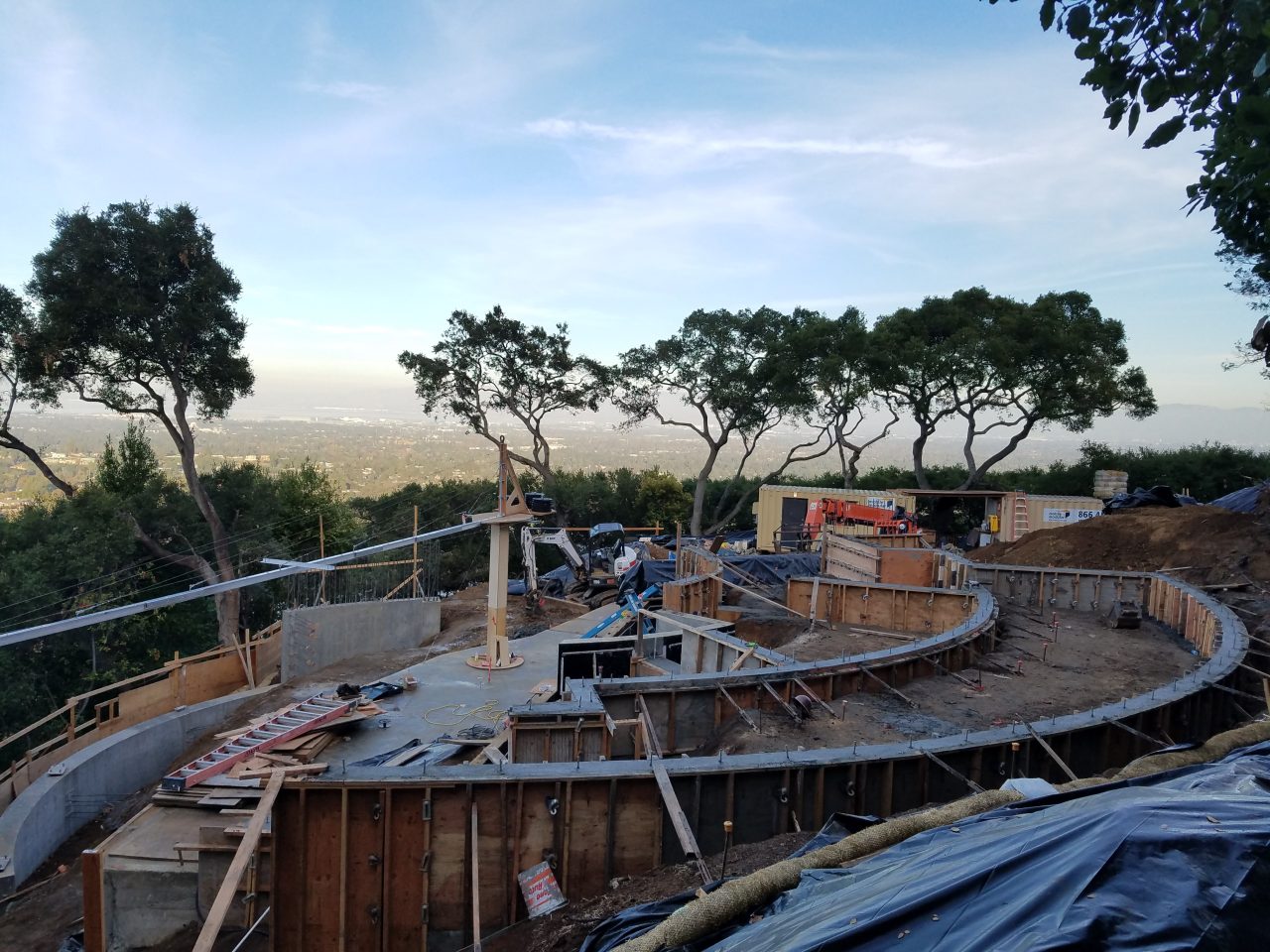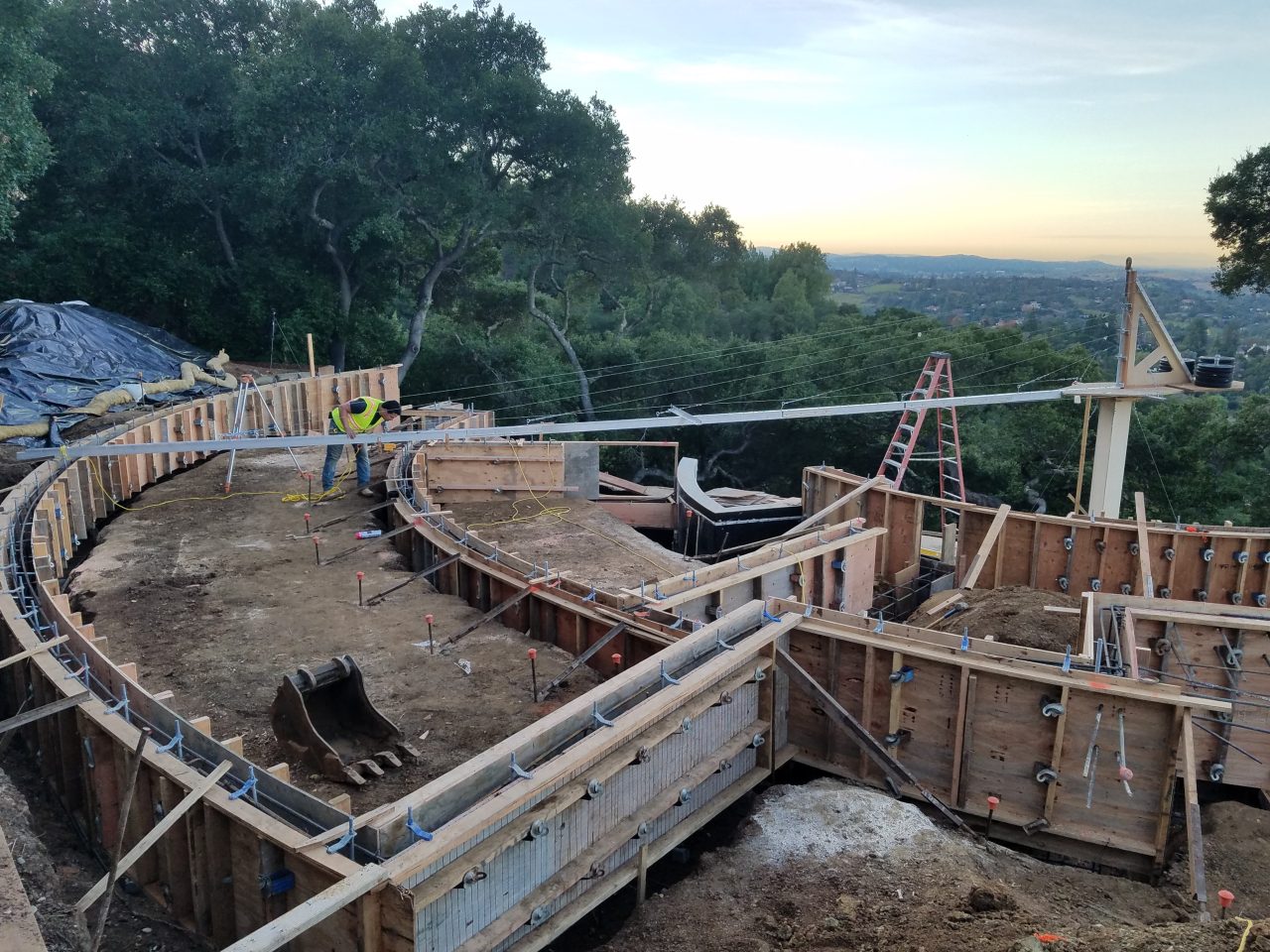Affectionately dubbed the ‘doughnut house’, it had an open area in the centre containing an internal courtyard – entering the home involved first walking through and underneath it, followed by a spiral ascent to the main level courtyard. ‘We’d never seen anything like it!’ the owners say.
Tucked away in Los Altos Hills, the aptly named Round House is a geometrically unique structure; one of a few similarly shaped homes built in California in the 60s. The clients fell in love with this quirky circular house and initially planned a modest remodel.
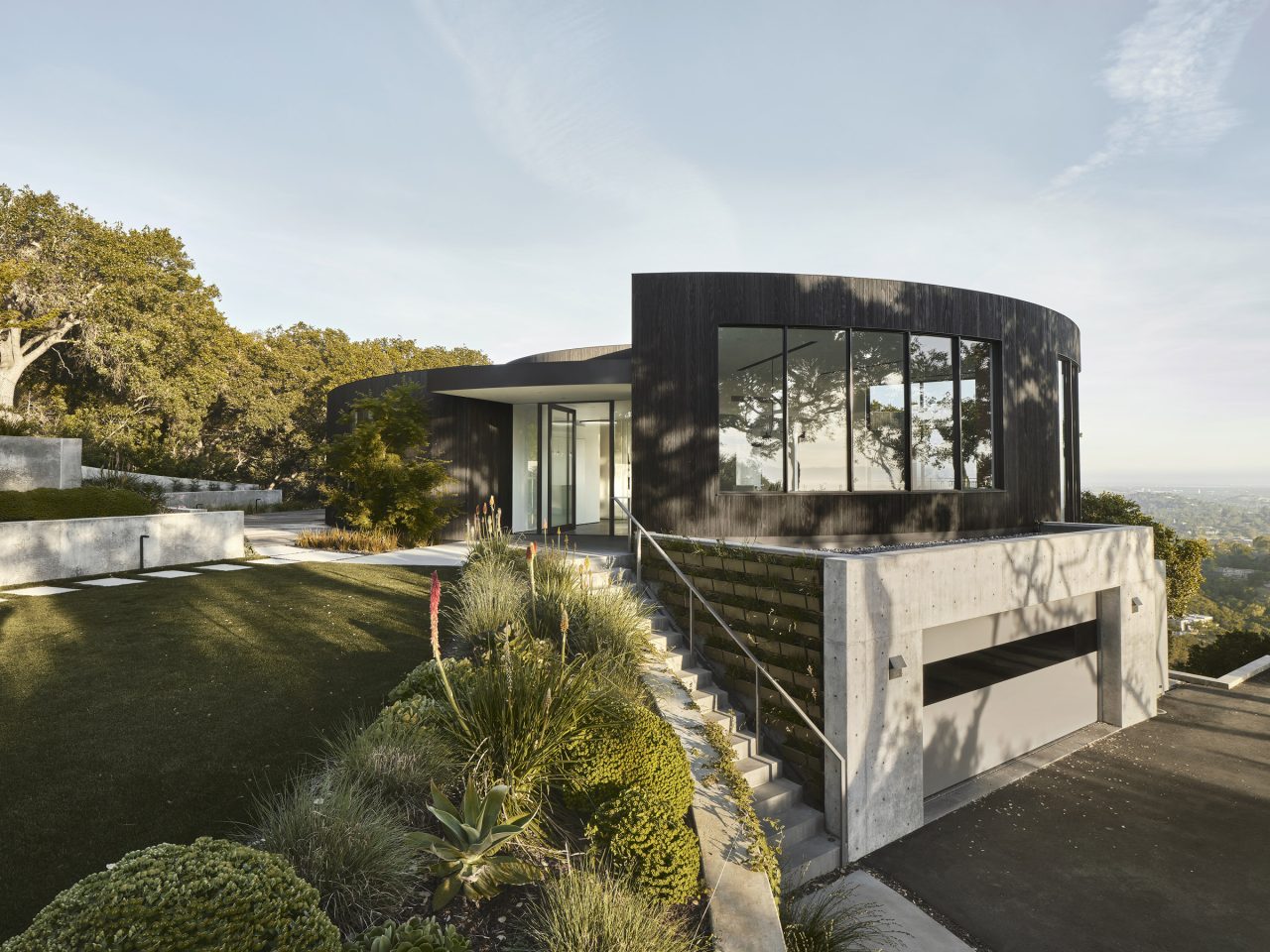
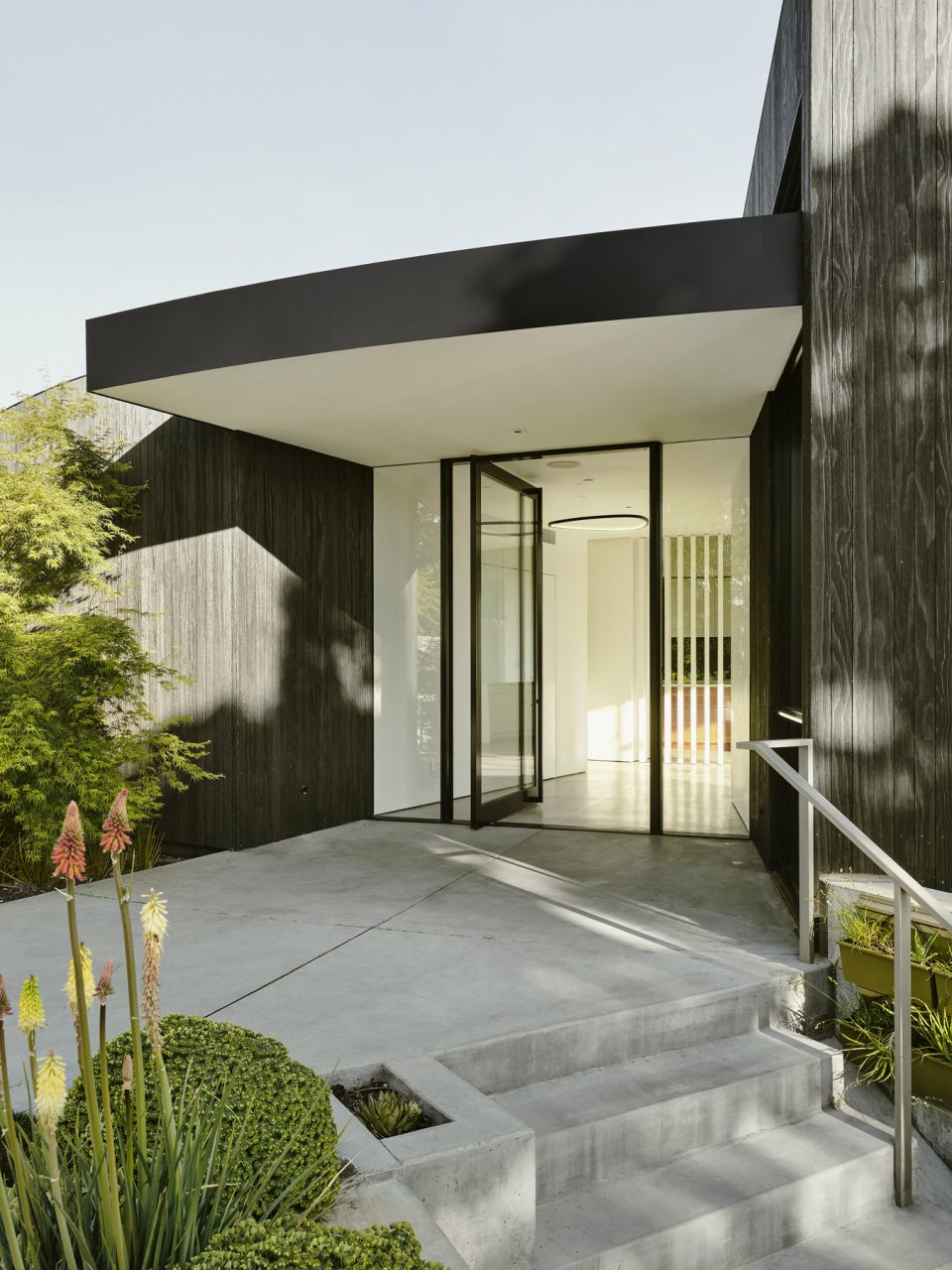
Engineered to withstand seismic shaking and twisting, the concentric design borrows from nature. There’s tons of circular steel, and it’s all crossed and connected to each other. The couple soon linked up with Steven Stept, managing partner of Feldman Architecture, whom they had coincidentally met several years prior while touring another property under consideration.
Soon after moving in, the pair recognised the inefficiencies of their new home – low window eaves curiously obstructed the otherwise spectacular views, spurring their desire to open and modernise the design. The Feldman Architecure team set out to craft a respectful enrichment of the home’s original form, focusing in on a site-sensitive response to the steep, challenging plot.
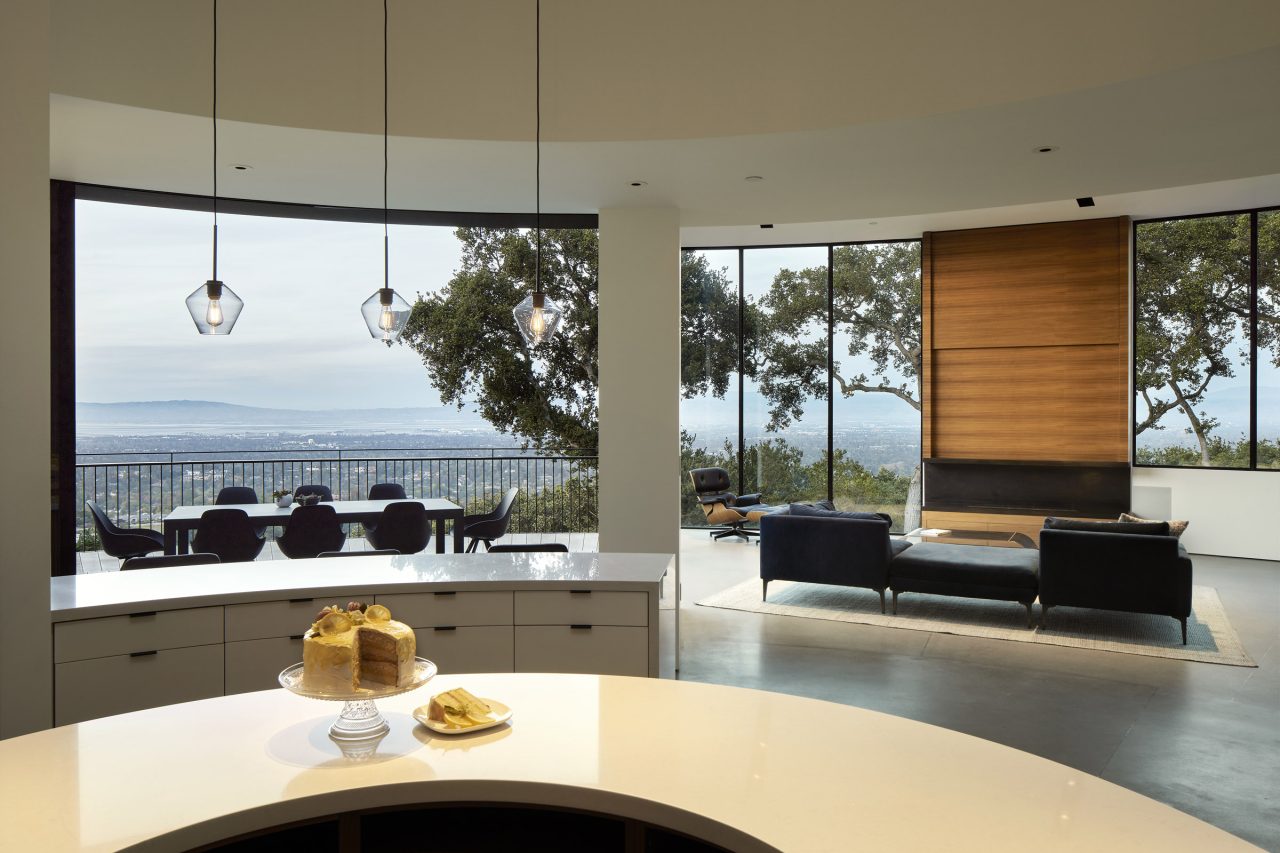
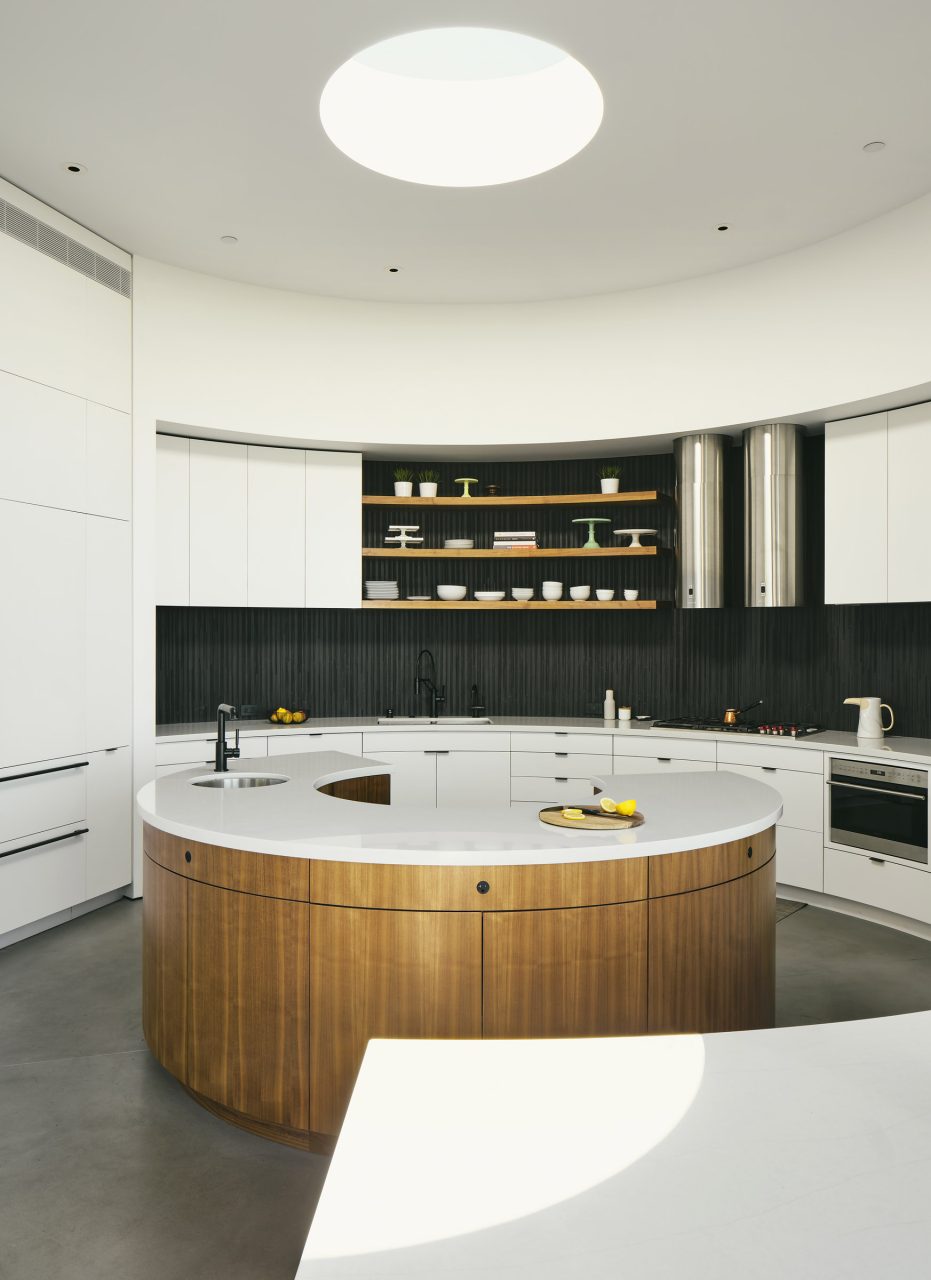
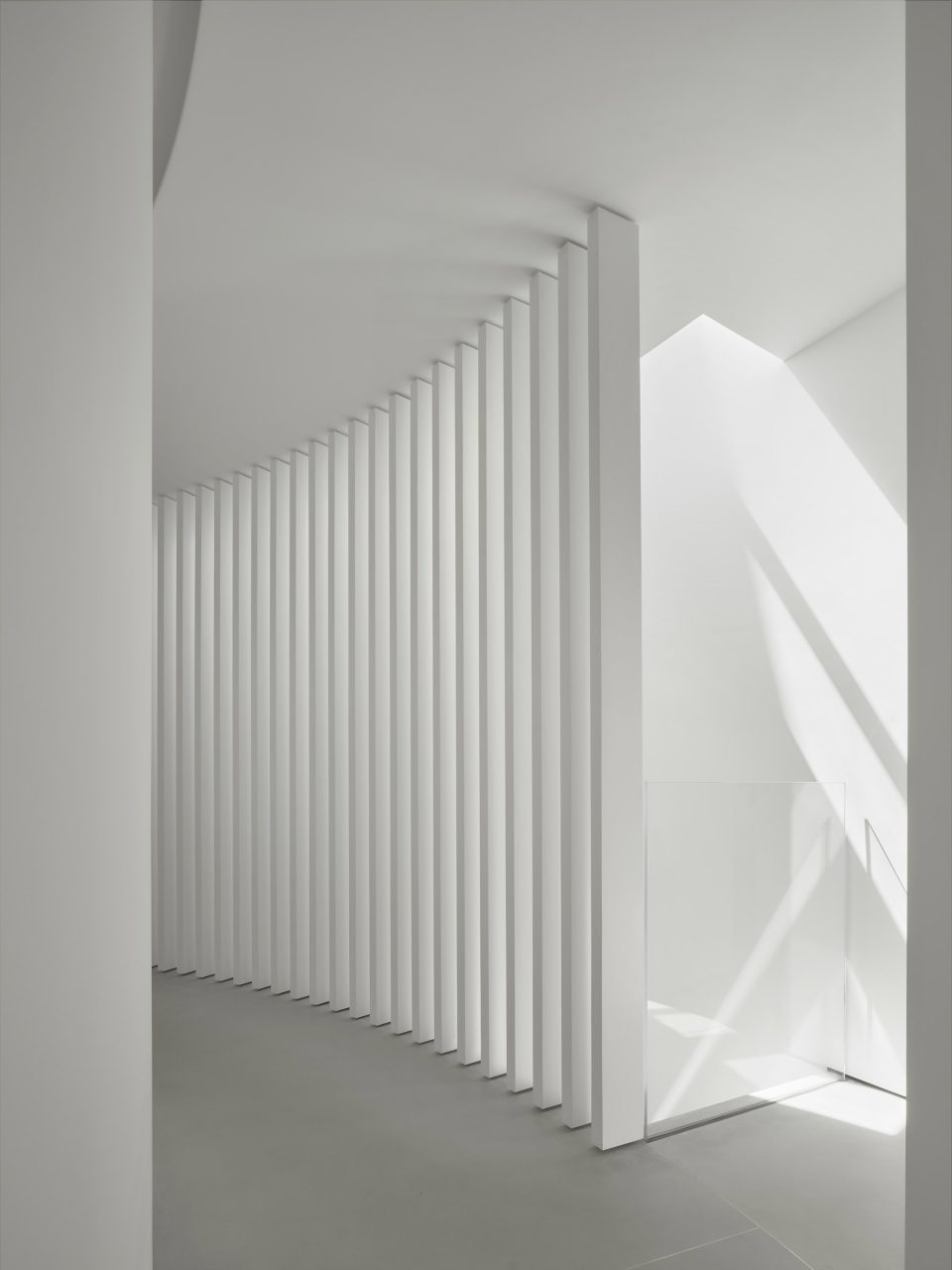
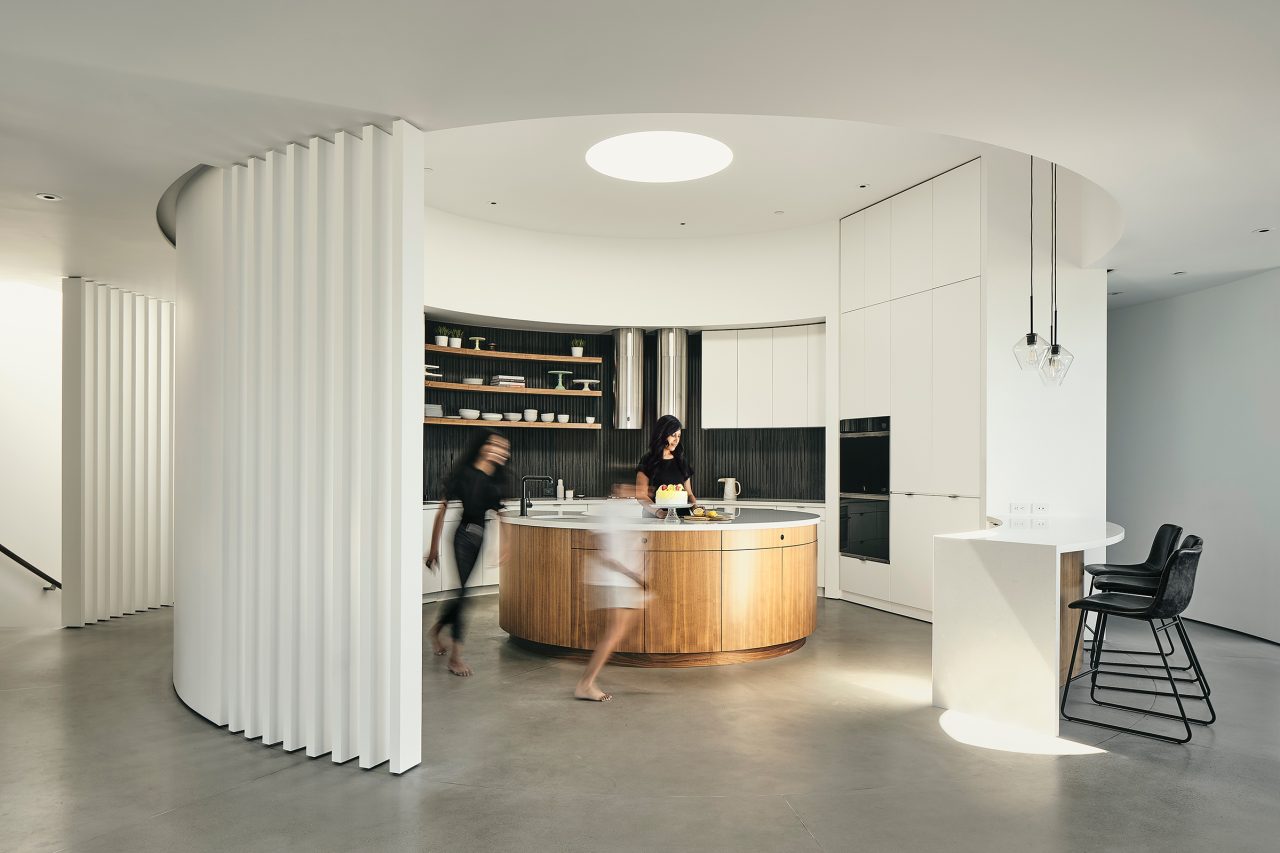
Working on a circular structure was uncharted territory for them– a first they were undaunted by. Los Altos Hills, incorporated in the 1950s as a rural-like South Bay suburb, was designed with large, non-uniform lots and somewhat restrictive building codes protecting open space, trees, and views. After tracking down the original building permit and negotiating with the city, the team eventually got approval for a comprehensive redesign – as long as they didn’t exceed the original permitted square meterage.
Perched atop a precipitous site, the structure has 180-degree views with a deck that runs around its perimeter. With the bordering Rancho San Antonio Preserve – protected open space which could never be developed – the home had a secluded and remote feeling, while still being just five minutes from the freeway.
The home enjoys sweeping views of the North and South Bay, from the Apple headquarters in Cupertino, to Shoreline Amphitheatre in Mountain View, to the Stanford campus, all the way up to the Bay Bridge in San Francisco.
The original home, built in 1965, ‘was really interesting and very awkward at the same time,’ recalls architect Steven Stept. While there was a tremendous view, much of it was blocked by the eaves of the roof.
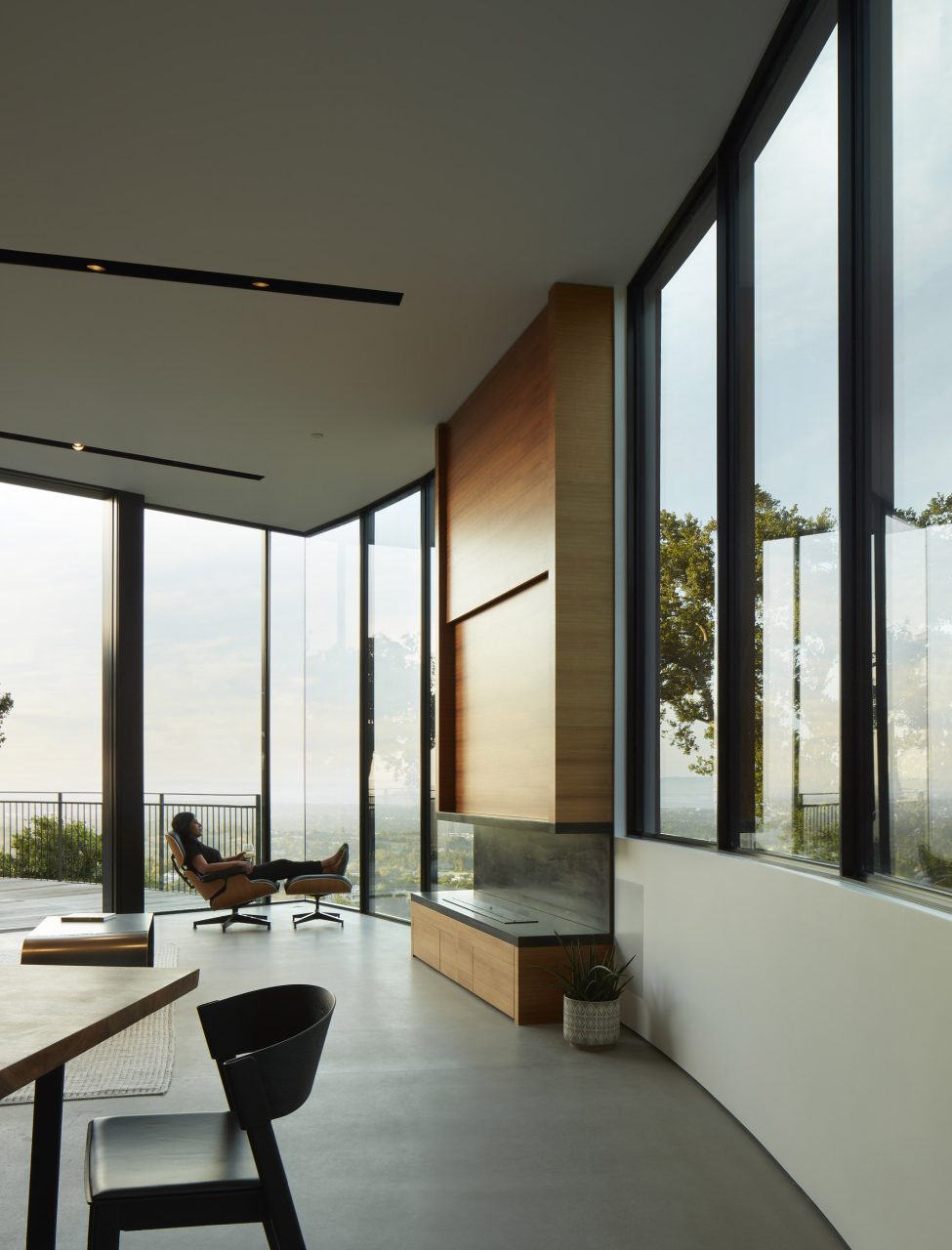
Chopping off the original roof eaves and raising the walls to create higher ceilings helped unlock greater views, giving the home a true panoramic experience.
The original central courtyard, once open-to-sky, transformed into the kitchen – an appropriate gesture for an aspiring baker and a family of food enthusiasts. A large circular skylight streams daylight into the kitchen, creating a makeshift sundial that illuminates different sections of custom curved casework throughout the day.
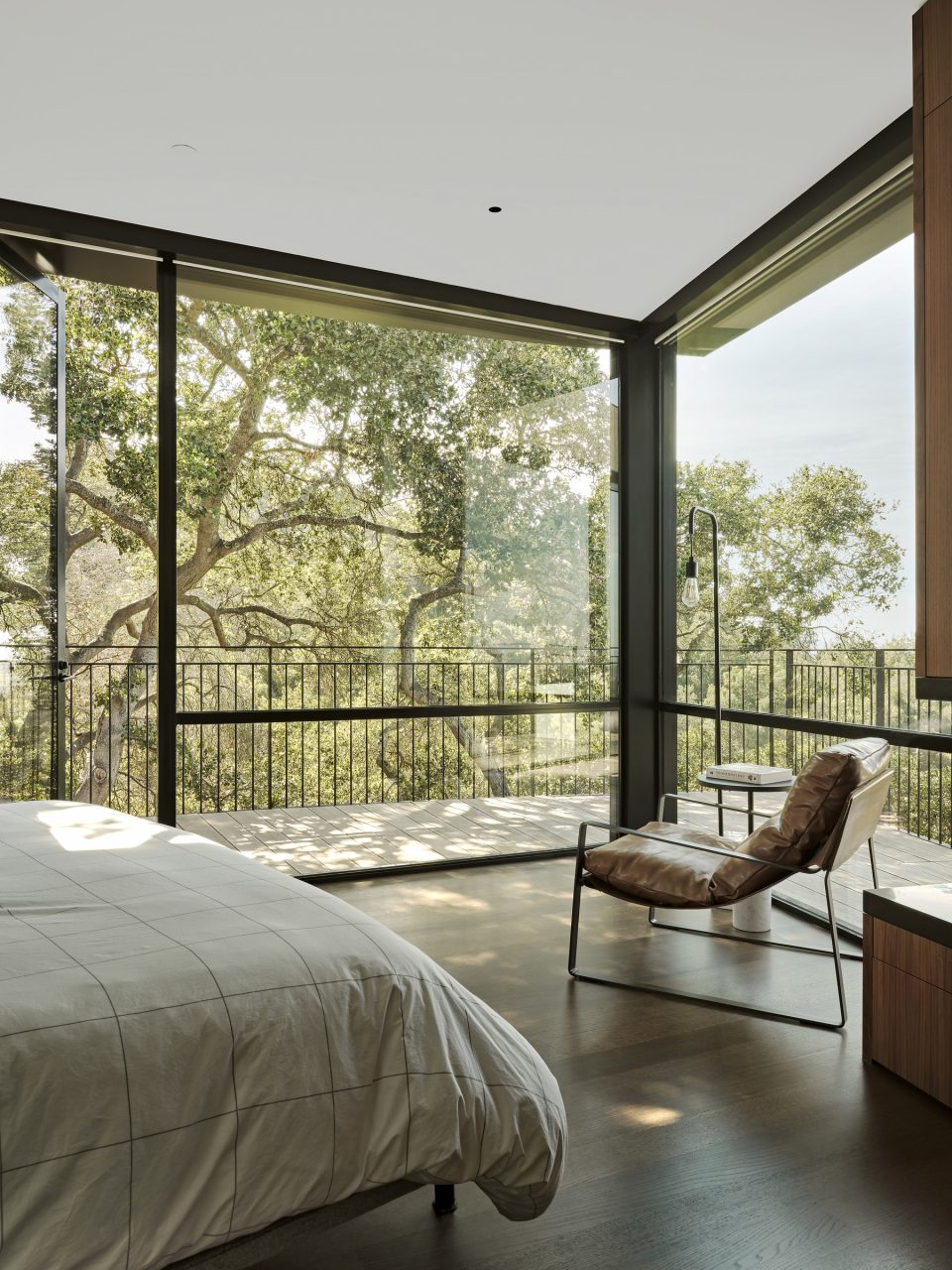
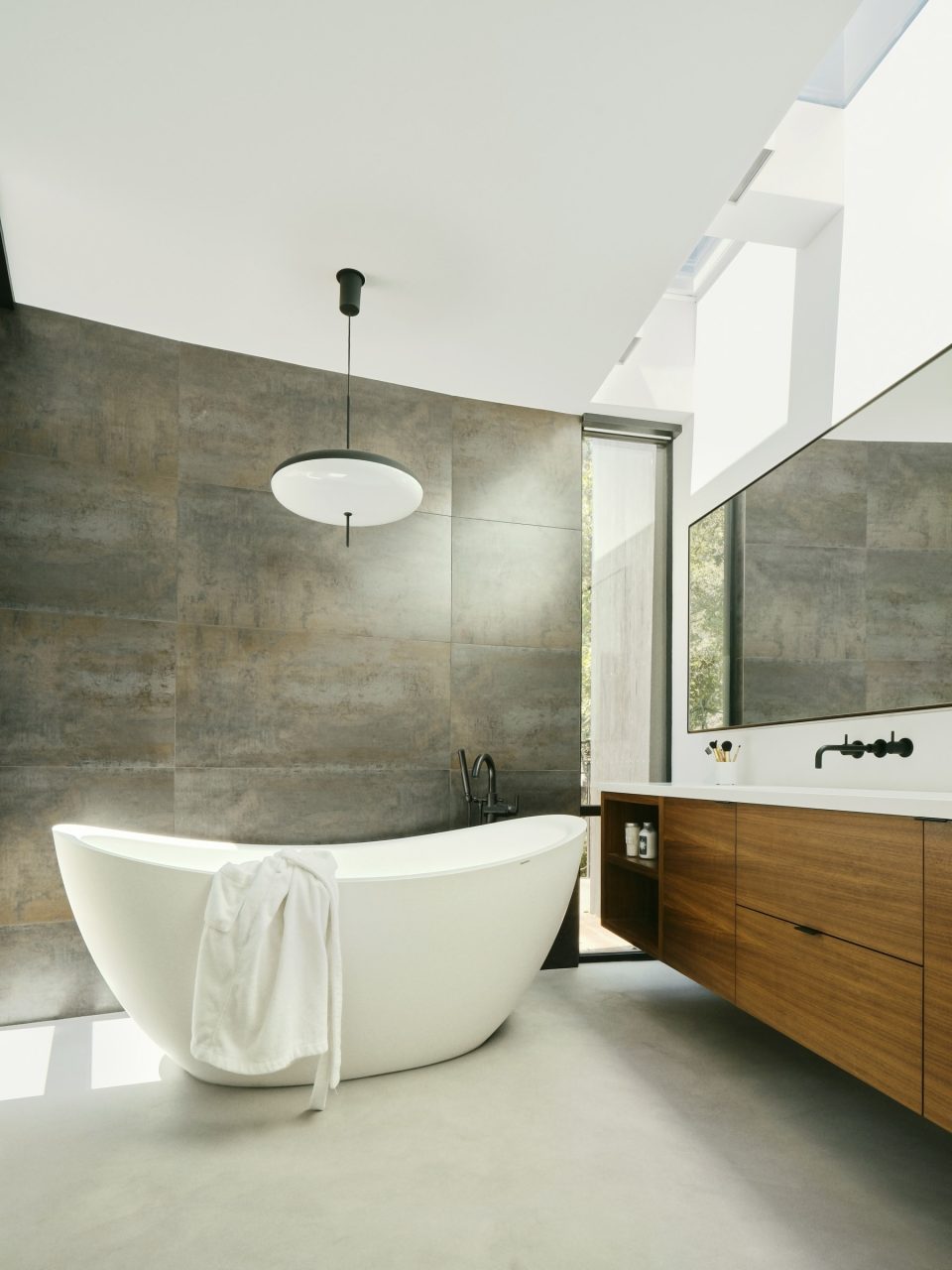
From the main entrance, visitors can effortlessly progress through the open plan living room, kitchen, and spacious deck before circumnavigating the house via a wrap-around walkway. A concentric hallway traces the kitchen, leading to discrete pie-shaped rooms carefully arranged to demarcate private from the public space. An outdoor deck is strategically carved out at the intersection of the living room and kitchen – framing sprawling views of the South Bay. Tall, curved pocket doors vanish into the walls, asserting a seamless indoor-outdoor connection. The modest perimeter deck allows outdoor access from all the bedrooms, while curved landscape walls radiate outward and into thoughtful softscape.
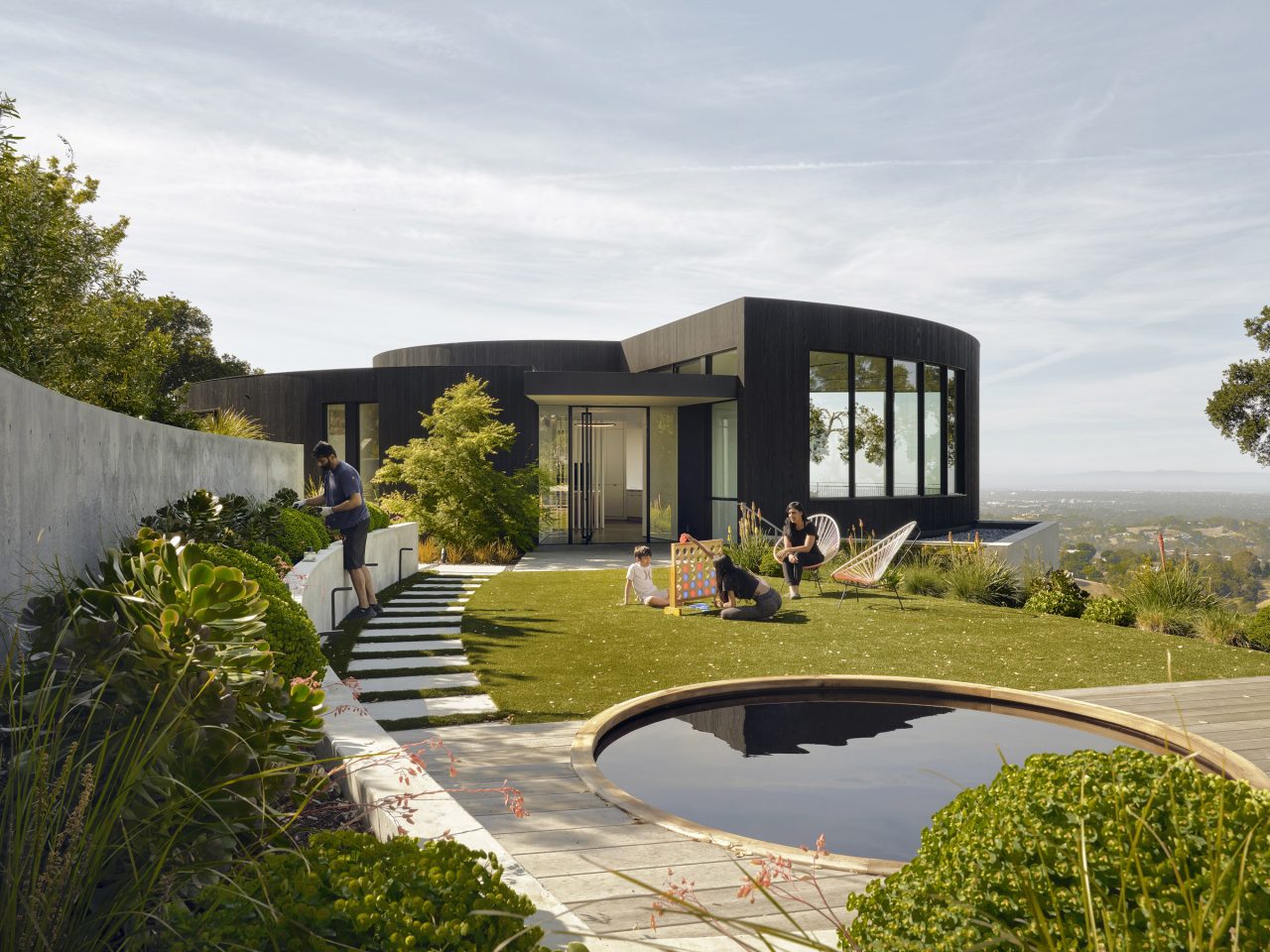
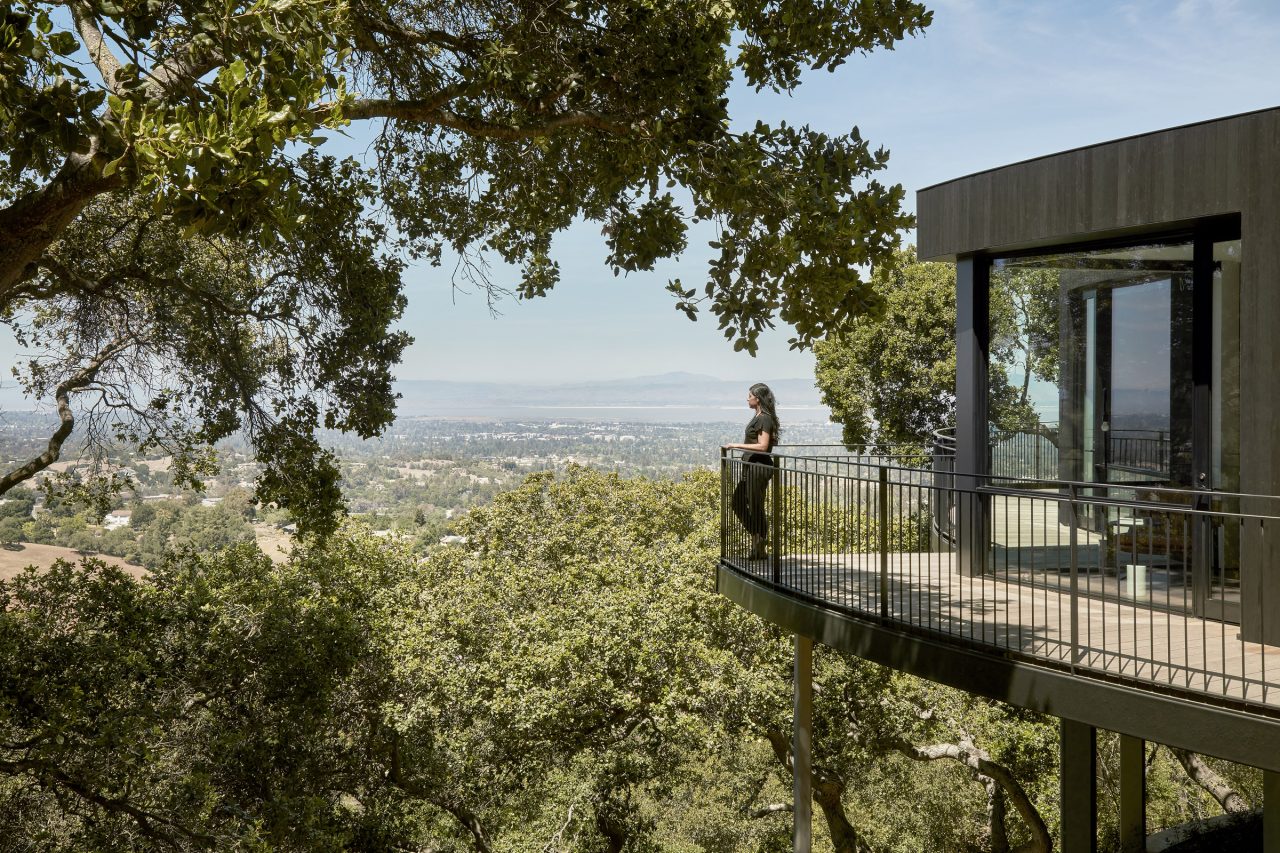
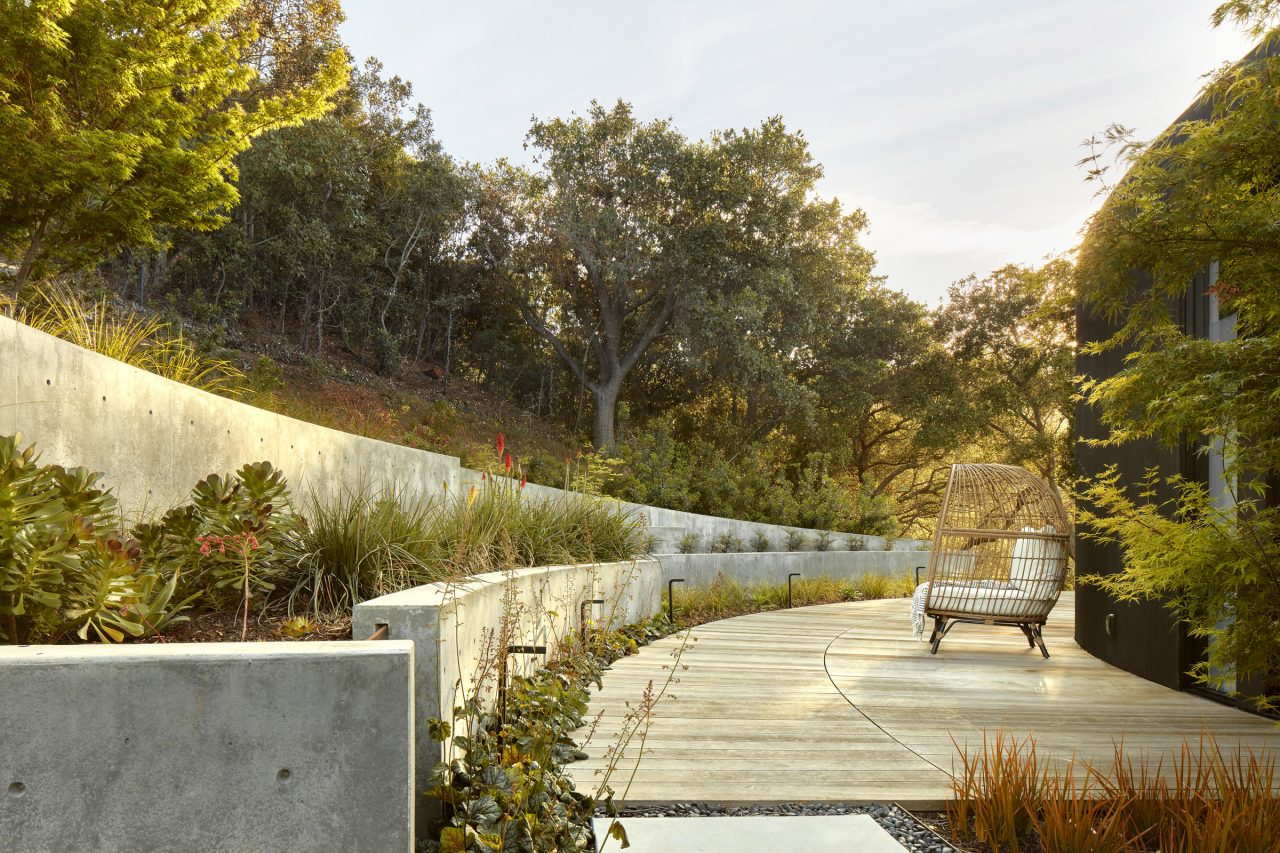
A Japanese style of charred wood siding, called Shou Sugi Ban, seamless concrete floors, crisp curved white walls, and minimalist interiors let the colorful and dramatic views speak first. Due to the challenges of its circular form, the project team had to look for creative solutions in each aspect of the venture. Most conventional solutions favour straight geometry, which made for a refreshing intervention that is an honest response to the constraints of this unique project.
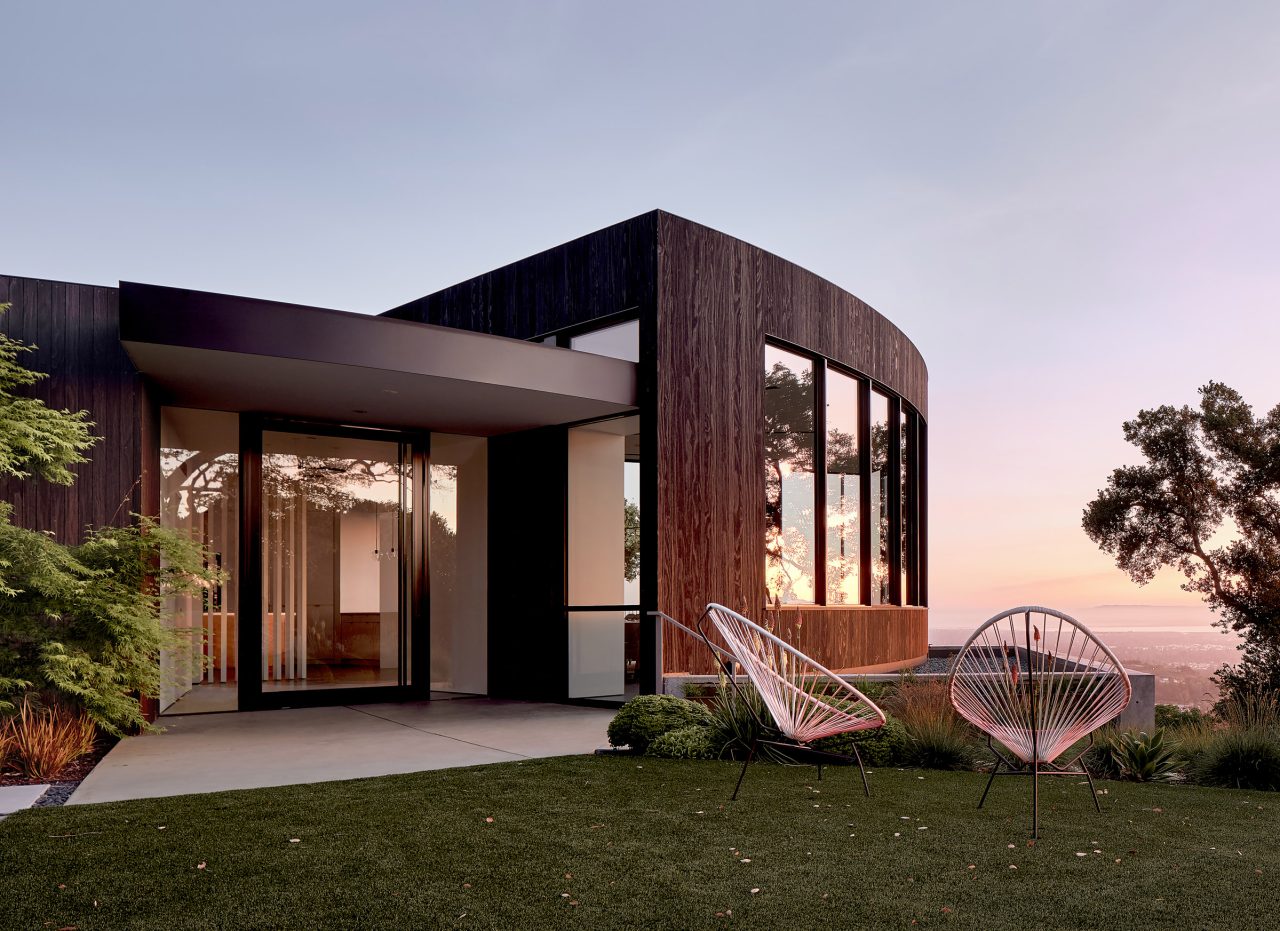
completed: 2020 | architects: Feldman Architecture | location: Los Altos Hills, CA, USA | size: 474 sq metres | photographer: Adam Rouse | general contractor: Baywest Builders | civil engineer: Lea + Braze Engineering Inc | landscape Design: Variegated Green | structural engineer: BKG Structural Engineers | geotechnical consultant: Romig Engineers Inc | arborist: Urban Tree Management | lighting designer: Tucci Lighting
Gallery of Construction Phase
Below: Original structure pre remodelling.
